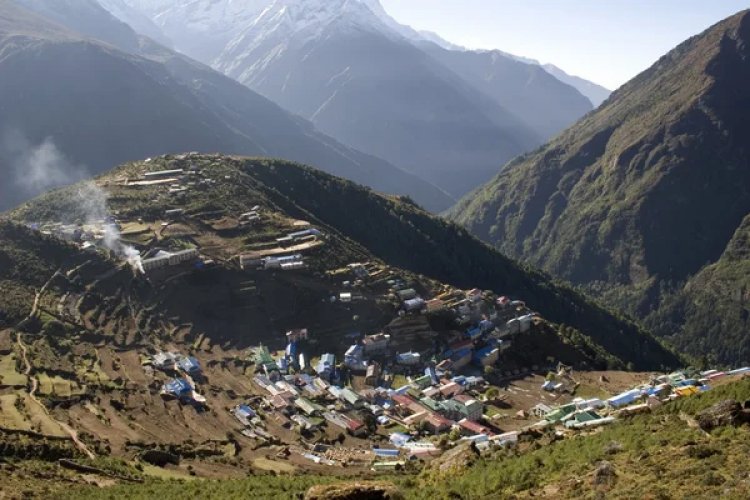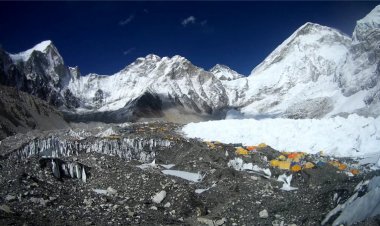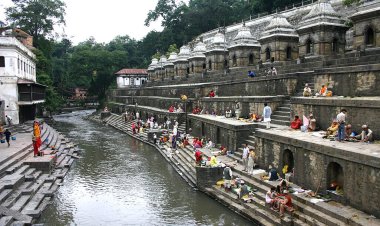Exploring the Biodiversity and Conservation Challenges of Nepal's Hilly Region
Explore Nepal's hilly region biodiversity and conservation. Learn about efforts to preserve unique ecosystems and wildlife amidst deforestation and climate change.

Nepal's hilly region is known for its stunning landscapes, rich cultural heritage, and diverse ecosystems. The region is home to a variety of unique flora and fauna, including many species that are endemic to the area. However, the hilly region of Nepal is also facing significant conservation challenges, including deforestation, soil erosion, and habitat loss. In this article, we will explore the biodiversity of Nepal's hilly region and the conservation efforts being made to protect it.
Biodiversity of Nepal's Hilly Region
The hilly region of Nepal is home to a wide range of ecosystems, from subtropical forests to alpine meadows. These ecosystems support a diverse array of plant and animal species, including many that are found nowhere else on earth. For example, the hilly region is home to the red panda, a small and elusive mammal that is classified as endangered. Other rare and threatened species found in the region include the clouded leopard, the Asiatic black bear, and the Himalayan musk deer.
In addition to its rich animal life, the hilly region of Nepal is also home to a variety of plant species. The region's forests are particularly diverse, with many species of trees, shrubs, and herbs. Some of the unique plant species found in the hilly region include the Himalayan yew, which is used to make the anti-cancer drug Taxol, and the Nepalese alder, which is a nitrogen-fixing tree that helps to restore soil fertility.
Conservation Challenges
Despite its rich biodiversity, the hilly region of Nepal is facing significant conservation challenges. Some of the conservation challenges faced by the hilly region are:
-
Deforestation:
Deforestation is one of the most significant conservation challenges in Nepal's hilly region. The demand for timber, fuelwood, and agricultural land is driving deforestation, which is leading to soil erosion, habitat loss, and a decline in biodiversity. -
Habitat loss:
As the population in the hilly region grows, more land is being cleared for human settlement and infrastructure development. This is particularly problematic in areas that are important for wildlife, as it can lead to fragmentation of habitat and isolation of populations. -
Climate change:
Climate change is affecting Nepal's hilly region in a variety of ways, including changes in precipitation patterns, rising temperatures, and melting glaciers. These changes are having an impact on the region's ecosystems and wildlife, and are making it more difficult to manage natural resources sustainably. -
Human-wildlife conflict:
As human populations grow and expand into areas that were once wildlife habitat, there is an increased risk of conflict between humans and wildlife. For example, farmers may see wildlife as a threat to their crops, while predators such as leopards may attack livestock. -
Poaching and illegal wildlife trade:
Poaching and illegal wildlife trade are ongoing conservation challenges in Nepal's hilly region. Some species, such as the red panda and musk deer, are particularly vulnerable to poaching due to their unique characteristics and the high demand for their products.
To address these conservation challenges, a variety of approaches are needed, including community-based conservation efforts, the establishment of protected areas, and sustainable resource management practices. Additionally, education and outreach efforts are needed to raise awareness of the importance of conservation and the role that individuals can play in protecting the region's biodiversity. By taking a comprehensive approach to conservation, it is possible to preserve the hilly region of Nepal's unique ecosystems and protect its wildlife for future generations.
Conservation Efforts
Despite these challenges, there are many conservation efforts underway in the hily region of Nepal. Some more details about conservation efforts in Nepal's hilly region are:
-
Community Forests:
One of the most successful conservation strategies in Nepal has been the establishment of community forests. These forests are managed by local communities who have a vested interest in their sustainability. Community forest programs have been shown to reduce deforestation and promote biodiversity, while also providing livelihood opportunities for local people. -
Protected Areas:
Nepal has a network of protected areas, including national parks and conservation areas, that are designed to protect important ecosystems and wildlife habitats. These areas are often managed in collaboration with local communities, who are involved in conservation activities such as patrolling and monitoring. Protected areas can also provide ecotourism opportunities, which can generate income for local communities while also promoting conservation. -
Habitat Restoration:
Restoration of degraded habitats is another important conservation strategy being used in the hilly region of Nepal. This involves restoring degraded land to its natural state, often through the planting of native tree and plant species. Habitat restoration can help to improve soil fertility, prevent erosion, and promote biodiversity. -
Community-based Conservation:
Many conservation organizations in Nepal are working with local communities to develop community-based conservation initiatives. These initiatives aim to provide alternative livelihood opportunities that do not involve deforestation or habitat destruction. For example, some communities are being trained in ecotourism or sustainable agriculture, which can provide a source of income while also promoting conservation. -
Education and Awareness:
Finally, education and awareness campaigns are important for promoting conservation in the hilly region of Nepal. Many organizations are working to educate local communities about the importance of biodiversity and the need for conservation. These efforts can help to build support for conservation initiatives and encourage people to take an active role in protecting their environment.
In conclusion, the hilly region of Nepal is a unique and diverse ecosystem that is home to many rare and threatened species. However, the region is also facing significant conservation challenges, including deforestation, habitat loss, and soil erosion. Through community-based conservation efforts and the establishment of protected areas, there is hope that the biodiversity of Nepal's hilly region can be preserved for future generations to enjoy.
What's Your Reaction?





































































































